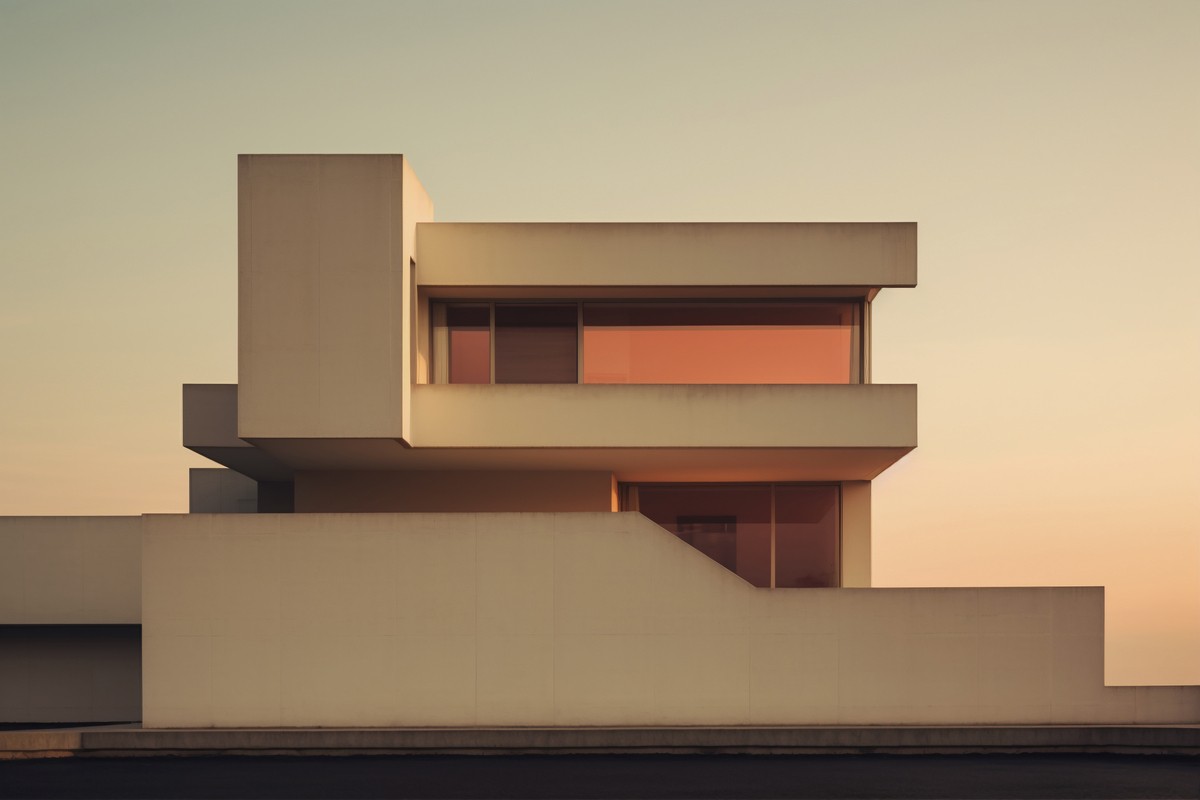
Minimalism in Design: Less is More in Modern Architecture
In a world where chaos and noise are ever-present, there’s a growing appreciation for simplicity and minimalism in design. This is concept, often summarized as ” less is more,” is particularly evident in modern architecture. The minimalism design distills spaces and objects to their essential elements, creating a sense of harmony, tranquility, and functionality. In this article, we’ll explore the principles of minimalism in modern architecture and how it influences how we live, work, and experience the world.
Origins of Minimalism in Design:
Minimalism in design, including architecture, is rooted in the early 20th century and was heavily influenced by the works of pioneers like Ludwig Mies van der Rohe and Le Corbusier. These architects believed in simplicity, clean lines, and focusing on function. They aimed to eliminate the unnecessary and let the fundamental elements shine.
The famous architect Mies van der Rohe famously stated, “Less is more”,which has become the mantra of minimalist design. This philosophy emphasizes removing extraneous details and decorations, resulting in spaces that feel uncluttered and serene.
Simplicity and Clean Lines
Its simplicity and clean lines characterize minimalist architecture. Buildings designed in this style often feature straightforward geometric shapes, such as rectangles and squares. Using straight lines and right angles creates a sense of order and structure. This simplicity allows for a focus on the essential elements of the design, such as materials, light and space.
Material Selection:
The choice of materials in minimalism in architecture is of utmost importance. Architects often opt for natural and straightforward materials like concrete, steel, glass, and wood. These materials are chose not just for their aesthetic qualities but also for their durability and functionality. natural light is essential in minimalist design, and materials are selected to enhance the interplay between light and space.
Open Spaces and Minimal Clutter:
One of the fundamental principles of minimalism is to create open and uncluttered spaces. This is achieved by eliminating unnecessary furniture, decorations, and divisions. Open floor plans are standard in minimalist homes and buildings, promoting flow and spaciousness. The idea is to create an environment where the mind can be at ease, and the sight can rest.
Functionality and Efficiency:
Minimalist architecture places a strong emphasis on functionality and efficiency. Every element in a minimalist design serves a purpose. Furniture, for example, is often multi-functional and unobtrusive. The layout of spaces is carefully planned to optimize the use of the area without excess.
The Role of light and Nature:
Natural light is a crucial component of minimalist design. Large windows and glass walls are commonly used to bring the outdoors inside. This not only enhances the visual connection with nature but also creates a sense of openness and transparency. Using indoor plants and greenery can further blur the foundation between the interior and exterior, promoting a sense of serenity and balance.
Color Palette and Minimalism:
Color plays a vital role in minimalist architecture. A limited color palette is often employed consisting of neutral tones such as whites, grays, and blacks. This restraint in color choices allows for an emphasis on form and materiality. The absence of bright and distracting colors contributes to the overall sense of calm and order.
Embracing negative space:
Minimalism celebrates negative space. Negative space refers to the empty areas in a structure, such as the space between objects or within a room. Minimalist architecture leverages negative spaces to create a sense of balance and harmony. These empty spaces are as important as the objects or structures and contribute to the overall composition.
The impact of Minimalism on Lifestyle:
Minimalist design doesn’t just stop at the aesthetics of buildings and interiors; it also has a profound impact on how we live and interact with our environment. here are a few ways in which minimalism influences our lifestyle:
- Reduced stress: Clutter and chaos can be a source of stress. Minimalist spaces offer a respite from the sensory overload, allowing for a more peaceful and focused environment.
- Sustainability: Minimalism often goes hand in hand with sustainability. By choosing durable and eco-friendly materials and opting for functional designs, minimalist architecture promotes a responsible approach to construction.
- Mindfulness: Living in a minimalist space encourages mindfulness. With fewer distractions, it’s more accessible to be present and fully engaged in the moment.
- Efficiency: Minimalism emphasize efficiency in design. This efficiency extends to our daily lives, encouraging us to use resources wisely and prioritize what truly matters.
- Adaptability: Minimalist spaces are versatile and adaptable. Their simplicity allows for easy modifications and personalization, accommodating changing needs and tastes.
The Future of Minimalist Design:
Minimalism in modern architecture: isn’t just a passing trend, it reflects our changing values and needs. As we grapple with issues like urbanization, sustainability, and the quest for tranquility, minimalist design offers a compelling solution.
In the future, we expect to see more innovative and sustainable approaches to minimalist architecture. Smart technology will likely play a more crucial part in improving the efficiency and functioning of minimalist spaces. As we become more aware of the impact of our built environment on our well-being and the planet, minimalist in design will continue to evolve and shape the way we inhabit our world.
Conclusion:
Minimalism in design, with its “less is more” philosophy, is not just a design trend but a way of life. It emphasizes simplicity, functionality, and a connection to nature, providing a respite from the chaos of the modern world. By understanding this, minimalist architecture from Cibi+Simeon designs offers a vision of the future that is not only aesthetically pleasing but also sustainable and conducive to a balanced and mindful way of living. Hence, we achieved the position of the best architectural firm in Chennai. As we look ahead, minimalism in design will continue to influence how we build, live, and experience the world around us, reminding us that sometimes, less truly is more.


